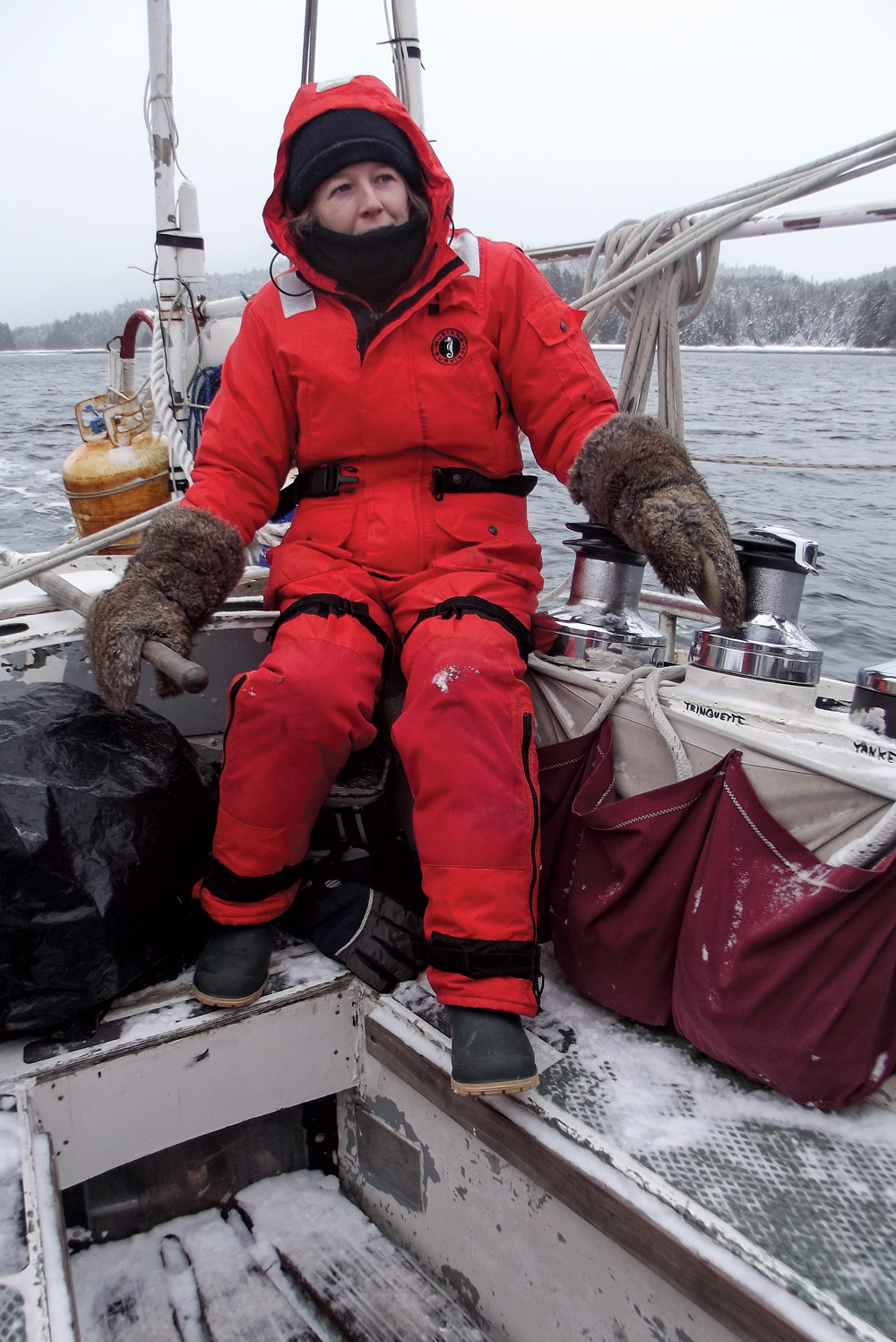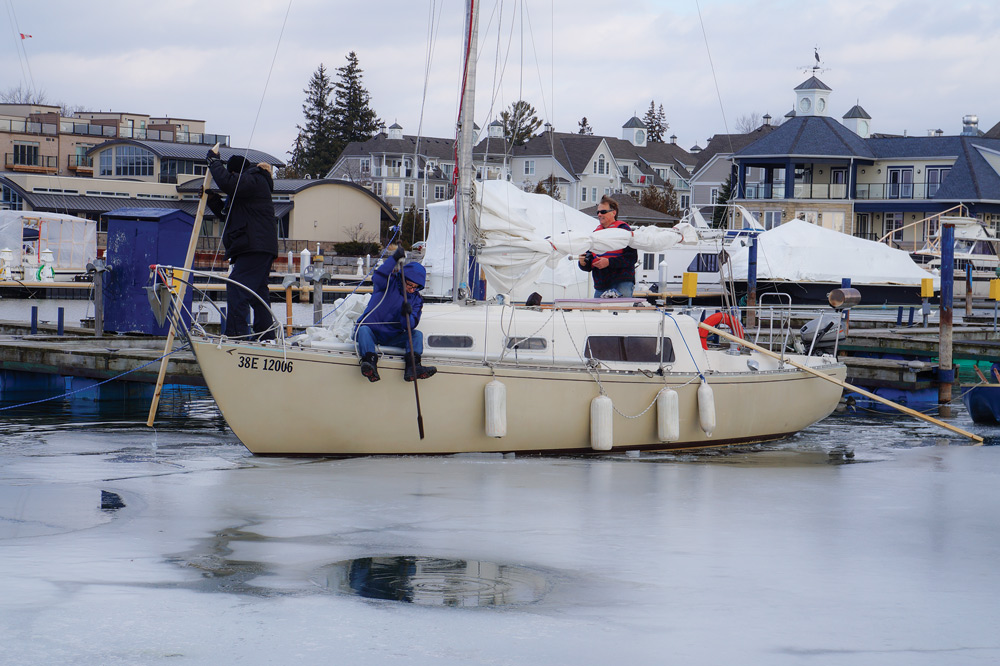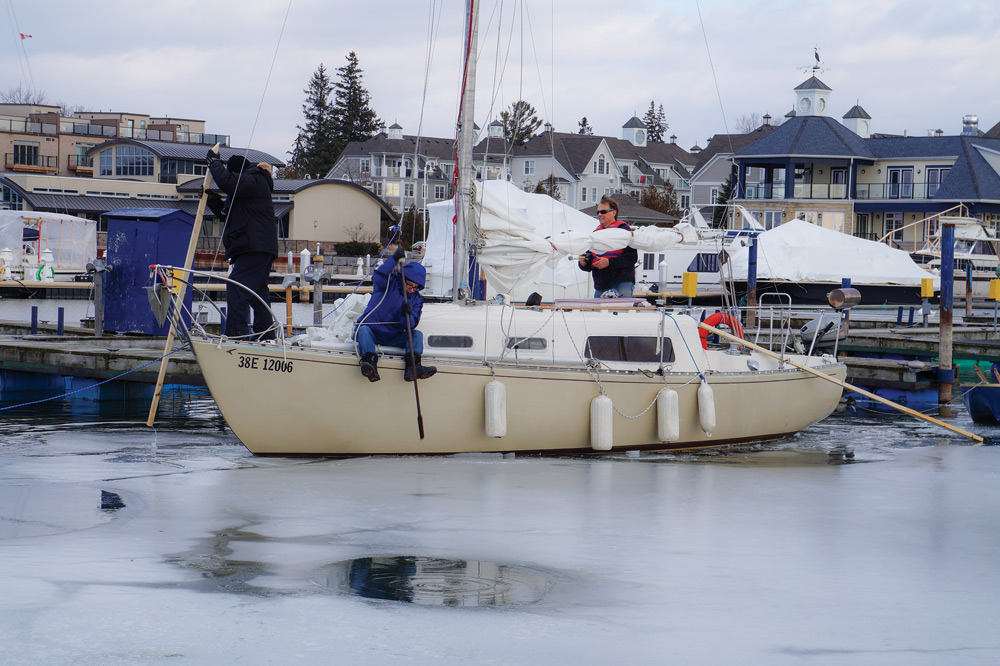Winter sailing……..Learn to enjoy your boat year-round, even in northern climates, by sailing when the mercury drops
For diehard sailors, the decision on where to store a boat for the winter might be more about whether you should store it at all. Sailing in the off season is possible and even enjoyable in many  wintery climates. On a sunny, winter day, with light wind and sparkling waves, warmly dressed sailors can enjoy a fabulous sail that might help take the edge off a long winter. You have to pick your weather carefully and your clothing well, but if you get that right, your wait for spring—and for what most people consider “the sailing season”—will be much more enjoyable. I’m specifically talking about daysailing in winter. Days feel much warmer than nights, and enjoyment is all about staying warm.
wintery climates. On a sunny, winter day, with light wind and sparkling waves, warmly dressed sailors can enjoy a fabulous sail that might help take the edge off a long winter. You have to pick your weather carefully and your clothing well, but if you get that right, your wait for spring—and for what most people consider “the sailing season”—will be much more enjoyable. I’m specifically talking about daysailing in winter. Days feel much warmer than nights, and enjoyment is all about staying warm.
I sailed my 35-foot schooner Rosemary Ruth for several winters when I lived in New York City. I also sailed on my 50-foot schooner Issuma most weekends when I wintered in Sitka, Alaska. I’m now sailing a 26-foot Grampian sloop on Lake Ontario whenever winds and ice let me out. To make the most out of winter sailing, look for light-wind days. I don’t pay so much attention to the air temperature, as I find the wind chill is much more important. For me, winds 15 knots or less are the most enjoyable. It’s much nicer to be ghosting along slowly in a wisp of wind than sailing at hull speed and freezing. Appropriate clothing is the key to winter sailing and odds are what you’d wear to go on a casual winter walk will be about right for sailing, with a possible change in footwear. Aim for windproof fabrics on the outer layer with plenty of insulation underneath, along with warm hats and gloves. A life jacket is highly recommended. Weighted down with all that clothing a person who fell into cold water would likely have a very difficult time surviving without one. If you sail in winter on a dinghy, a drysuit is required equipment because you will be getting wet. Layer glove liners under a pair of dishwashing gloves with sailing gloves on top to keep hands dry and relatively warm. Hot drinks help keep sailors warm as well. It’s also a good idea to keep the companionway slide in and the cabin closed up to preserve any heat down below. Sailors who plan to do a lot of cold-weather sailing may want to consider adding a cabin heater, a luxury that will also make sailing in the shoulder seasons more pleasant. Paraffin, diesel and propane-fueled heaters are all available, with varying amounts of complexity. All require adequate ventilation, so installing a heater is a project that should be well thought out. There are a few other hurdles beyond just the weather that have to be overcome when sailing in winter. Lines left touching decks get wet when it snows or rains and can freeze. Frozen lines can be a problem going through blocks and rope clutches, as they are not only stiff and hard to turn, but also swell to a larger diameter. A spare line tied with a rolling hitch to a line that normally goes through a rope clutch may work around the problem of a frozen, swollen line suddenly being too big to go through a rope clutch, but plan out how and if this can work on your boat before leaving the dock. Keeping the lines as dry as possible helps. Ventilated bags for sheets and halyards that keep them off the deck, or just simply ensuring to coil and hang all ropes before leaving the boat keeps them dry and flexible.
Motors that run well in warm weather may be more difficult to start in winter. A tune-up or thorough checkup at the end of the “regular” sailing season could be worthwhile. Batteries have much less power when cold (as any car owner in cold climates knows), and cold engines are harder to turn over because the oil inside them is thicker, so require more power to crank fast enough to start. How good the ship’s batteries are for cold-weather starting is something that needs to be tested at the dock before leaving. For boats small enough to use them, oars are a reliable, yet a slow way of getting home when the wind dies if the engine won’t start. Oars are also nice on sailboats with outboard motors for owners who are adventurous enough to chop their way through ice to go sailing. Propellers on outboard motors on sailboats are often high in the water, where the broken ice is, so more liable to be damaged than propellers on inboard-powered craft, which are usually lower in the water, below the broken ice.

Obviously ice is a danger to most boats and sailboats are generally not good ice breakers. Sailing opportunities will often be dictated as much by the weather as they are by ice in the harbor.
If you haven’t hauled your boat out of the water for the winter, consider looking for a nice winter day, with light winds and sunshine, and going for a daysail.





